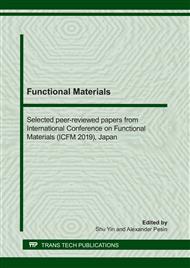p.3
p.9
p.15
p.21
p.27
p.33
p.39
p.45
p.51
The Effect of Laser Treatment on the Secondary Bonding Behavior of Carbon Fibre Composite
Abstract:
Joining carbon fibre reinforced composites with adhesive are widely used in various applications including aircraft structures and commercialized leisure products. However, surface contaminations hinder the adhesion of the bonding. Laser based surface treatment on bonding surface is suggested to improve the adhesion on the surfaces for secondary bonding. In this paper, single lap shear tests of the samples show that the laser pre-treated samples lead to the higher joint strength then acetone cleaned reference samples and surface sanded samples. The failure mode changed from adhesion failure in the reference sample to cohesion mode in the laser treated samples. The structure, topography and morphology of the composite surfaces which were pre-treated with laser radiation were observed. A correlation between surface properties and adhesive bonding strength was investigated. It should be noted that the variation of the pulse frequency level of the laser treatment contributed to the fibre breakage and the epoxy removal level of the sample surfaces.
Info:
Periodical:
Pages:
27-32
Citation:
Online since:
May 2020
Authors:
Price:
Сopyright:
© 2020 Trans Tech Publications Ltd. All Rights Reserved
Share:
Citation:


